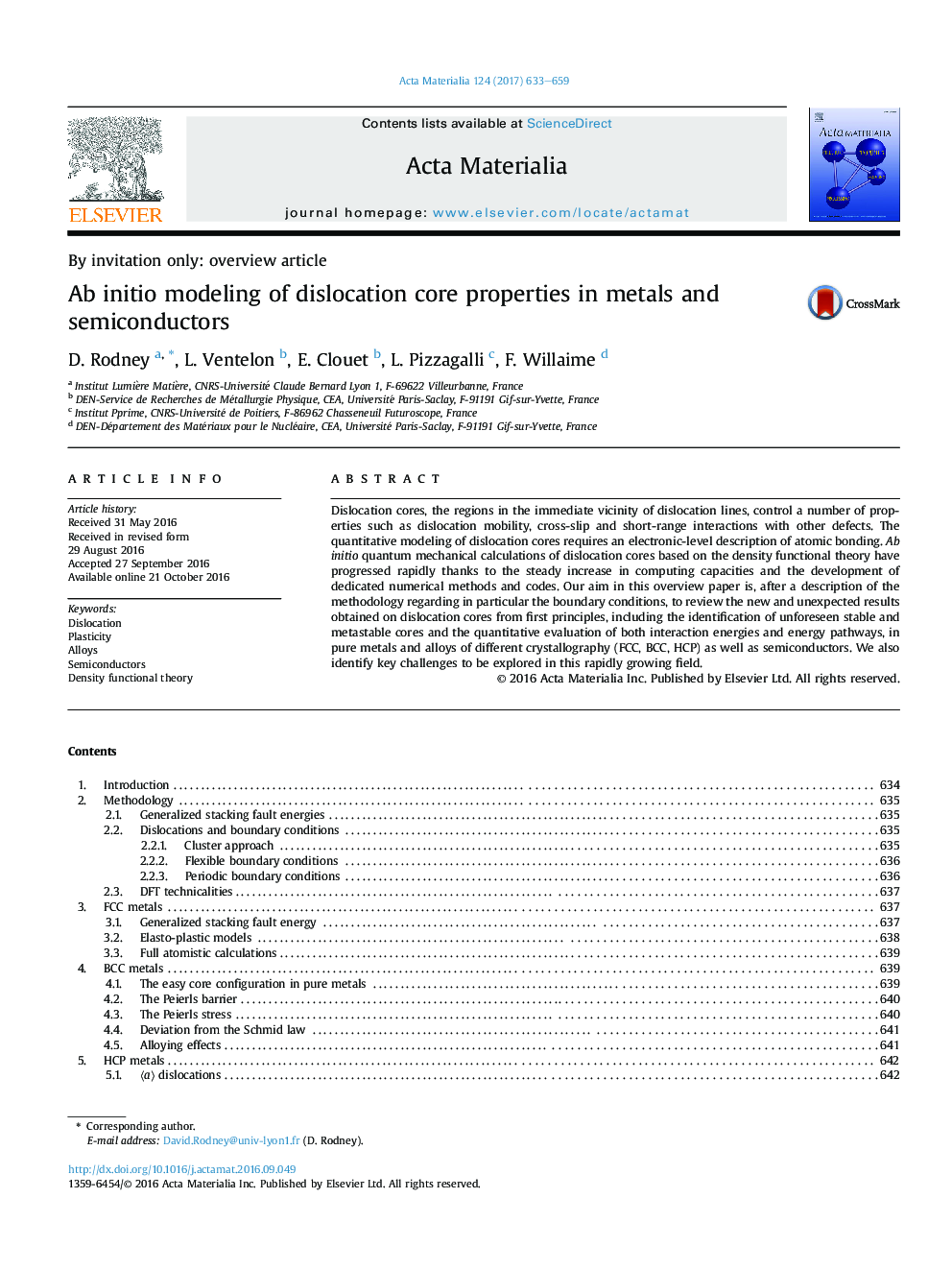| Article ID | Journal | Published Year | Pages | File Type |
|---|---|---|---|---|
| 5436418 | Acta Materialia | 2017 | 27 Pages |
Dislocation cores, the regions in the immediate vicinity of dislocation lines, control a number of properties such as dislocation mobility, cross-slip and short-range interactions with other defects. The quantitative modeling of dislocation cores requires an electronic-level description of atomic bonding. Ab initio quantum mechanical calculations of dislocation cores based on the density functional theory have progressed rapidly thanks to the steady increase in computing capacities and the development of dedicated numerical methods and codes. Our aim in this overview paper is, after a description of the methodology regarding in particular the boundary conditions, to review the new and unexpected results obtained on dislocation cores from first principles, including the identification of unforeseen stable and metastable cores and the quantitative evaluation of both interaction energies and energy pathways, in pure metals and alloys of different crystallography (FCC, BCC, HCP) as well as semiconductors. We also identify key challenges to be explored in this rapidly growing field.
